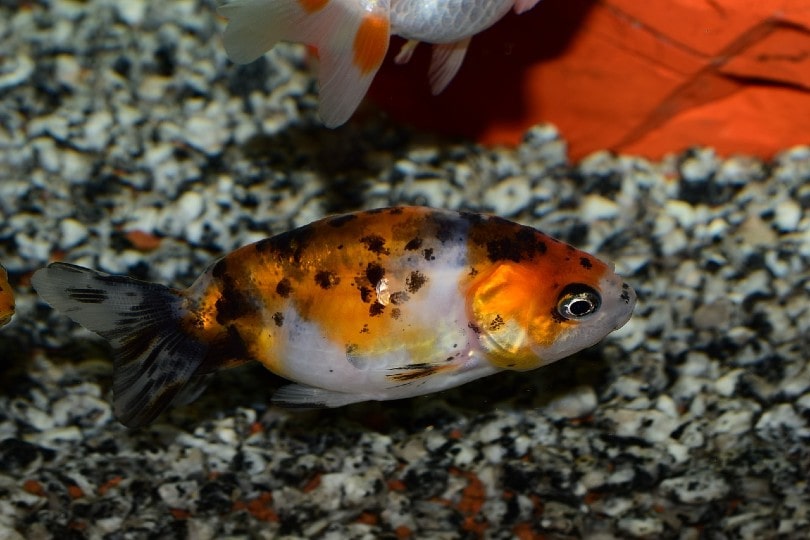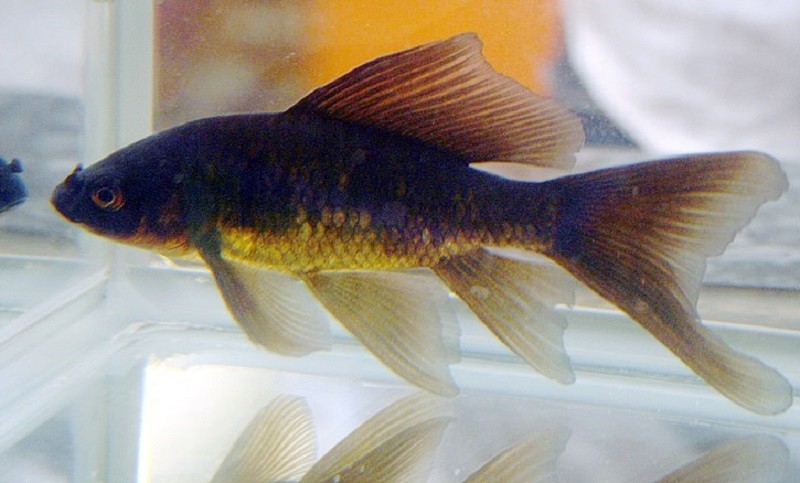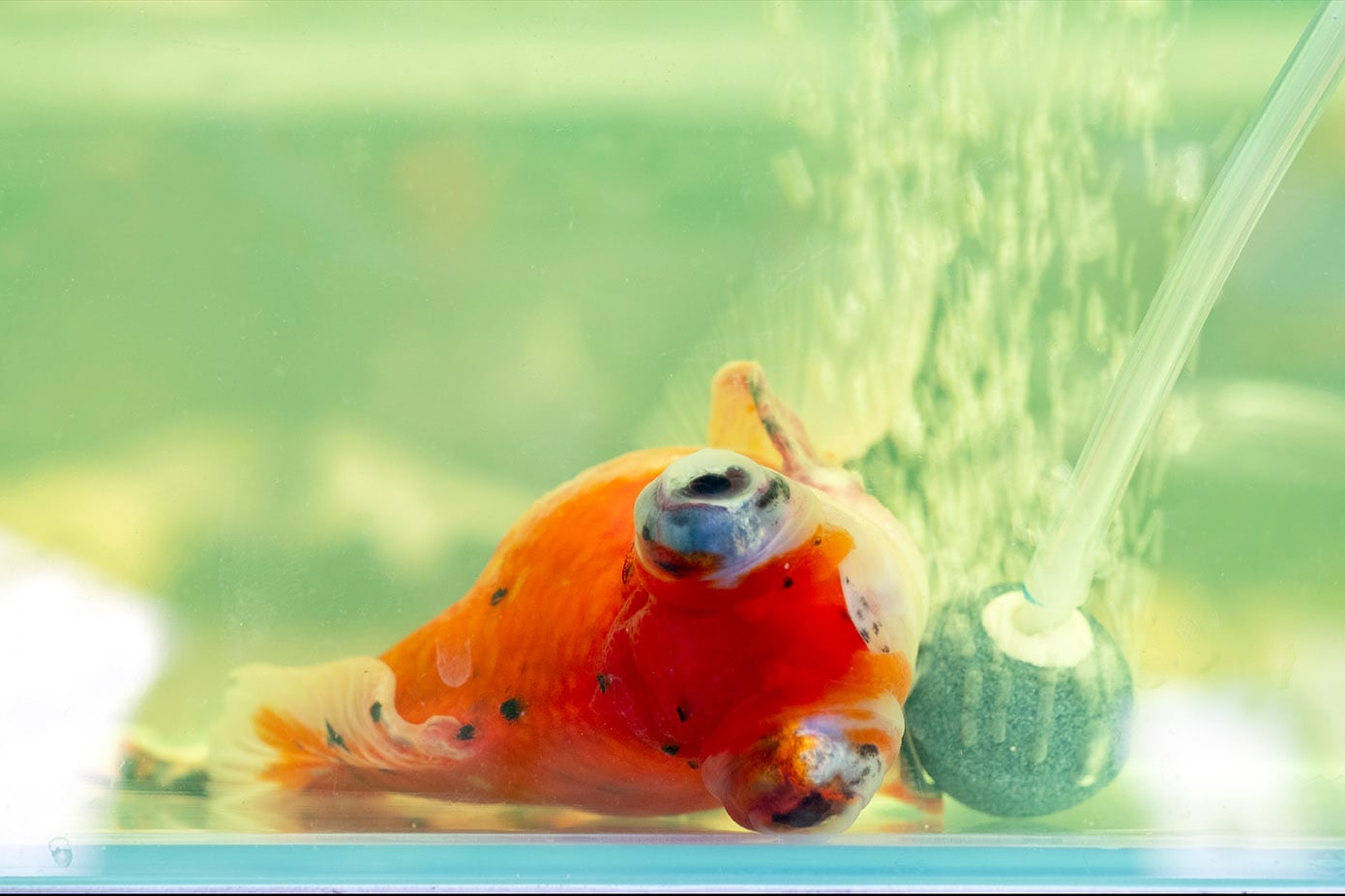
As goldfish age, they may change colors. This is especially common as they grow from juveniles to adults, so you may notice subtle or extreme color changes, with some goldfish having their entire body change color. If you’ve noticed your goldfish developing black spots in various locations across its body with no other color changes, you may have wondered what’s going on.
There are various reasons that your goldfish may develop black spots, and a few of them require intervention on your part. If you’ve noticed your goldfish turning black, keep reading.
The 3 Likely Reasons Your Goldfish Is Turning Black
1. All in the Genes
Some goldfish are just genetically predisposed to developing black patches, and there’s nothing wrong with them at all. This is especially common in goldfish like Shubunkins that already have patchy coloration that may darken over time. Some goldfish are born with black patches on their scales or fins, and as they age, the spots get larger instead of going away. Genetic black markings are nothing to be concerned about.
It is important to point out, though, that most goldfish will lose black coloration as they age, not gain it. New development of black spots should be addressed, just in case there’s an issue in the tank.
2. Stressed-Out Fish
If you notice that your goldfish is developing black patches, it’s a good idea to check out your water parameters and tank environment. Not all goldfish will develop black patches due to genetics, and a high-stress tank environment can lead to black spots developing. This can be related to water parameters being out of whack, but it can also be related to stressful environmental factors like bullying, high heat, and frequent changes.
If you notice your goldfish slowly turning black, check all the environmental factors that you can think of. Ensure that your water temperature is at a healthy, safe level, that the parameters are in check, and that everyone in the tank is happy and free of bullying.

3. Dangerous Ammonia
The most likely culprit of your goldfish developing black spots is ammonia poisoning, which is caused by elevated ammonia levels. There’s good news and bad news when it comes to black spots related to ammonia poisoning.
The good news is that black patches actually indicate that healing is occurring, so the goldish is recovering from the ammonia poisoning that caused the black spots. The bad news is that black patches developing does not mean the ammonia levels are safe. If left in an environment with high ammonia long enough, a goldfish’s body will begin to attempt to heal the damage, creating black patches, even though the ammonia level is still elevated.
If your goldfish is developing black patches, the first thing that you should check is your tank’s ammonia level with a reliable test kit. Ammonia levels can become elevated due to overfeeding, rotting organic matter in the tank (like dead plants and animals), and inadequate filtration. Any ammonia level above 0 should be immediately addressed and treated with water changes and products that help make ammonia levels safe.
Once the ammonia levels are reduced and your goldfish continues to heal, the black patches will go away. Sometimes, your goldfish’s black patches will go away overnight, but it can also take days or weeks. Products that support slime coat production and help reduce fish stress can make a big difference in helping your fish heal during this time.
If you are looking for help to get the water quality just right for your goldfish family in their aquarium, or just want to learn more about goldfish water quality (and more!), we recommend you check out the best-selling book, The Truth About Goldfish, on Amazon today. It covers everything from water conditioners to tank maintenance, and it also gives you full, hard copy access to their essential fishkeeping medicine cabinet!
Final Thoughts
Even though black patch development can be normal for some fish, you should still investigate the cause to be safe. Other behaviors that indicate that there’s a problem with the water or the tank environment are fin clamping, air gulping, and jagged or shredded fins. When in doubt, always check your water parameters. Poor water quality is the number-one cause of illness in goldfish, and it opens up pathways for multiple types of infections, parasites, and injuries like burns and fin damage.
The safest thing that you can possibly do for your goldfish if they’re turning black is to check the water, even if you think that there isn’t a problem. It’s better safe than sorry when it comes to water quality and black patch development on your goldfish!
Featured Image Credit: Juan Carlos Palau Díaz, Pixabay










